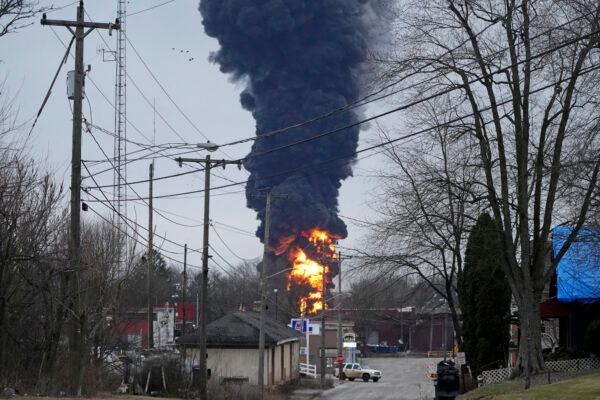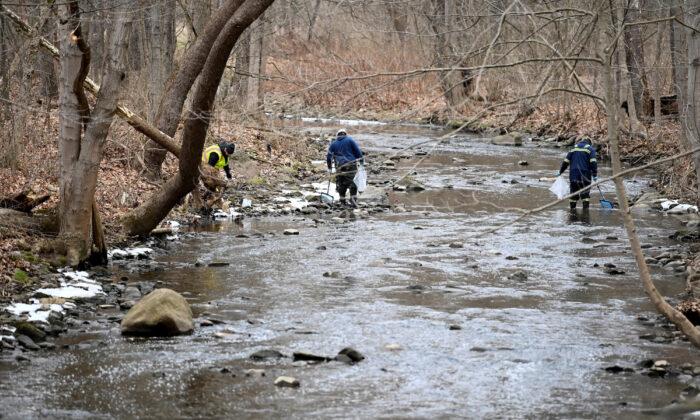Ohio Gov. Mike Dewine said on Wednesday that water in East Palestine’s municipal system is safe to drink nearly two weeks after a train derailed, leaking toxic chemicals into the environment.
“Is the air and water safe for residents?” Vance asked. “I have heard alarming anecdotes about contaminated waterways and effects on wildlife. I encourage anyone with credible reports of environmental harms to contact my office.”
“I am dedicated to ensuring that the relevant authorities do not use tests conducted as a permission slip to pack up and go home,” Vance added. “This is a complex environmental disaster with impacts that may be difficult to assess in the short term. Long-term study will be imperative.”

Derailment
At around 8:54 p.m. on Feb. 3, a Norfolk Southern Railway freight train derailed on main track 1 in East Palestine, Ohio, during its journey from Madison, Illinois, to Conway, Pennsylvania.To avoid a potential explosion, Norfolk Southern, the company whose train derailed, conducted a “controlled release” of the chemicals on Feb. 6, which involved burning the chemicals and releasing fumes into the air.

Sen. Sherrod Brown (D-Ohio) has called on the EPA and Ohio EPA to do “full safety testing.”
Local Concerns
Meanwhile, residents of East Palestine have expressed concerns about the long-term health impacts of the hazardous chemical burnoff, and some have also expressed skepticism about what they’ve been told by officials.Marilyn Figley, who raises chickens and produces her own food on her property, previously told The Epoch Times that she isn’t sure if her eggs are safe to eat anymore.
“The railroad said they would deodorize and sanitize the inside of our house, but we hired an independent company to do something more comprehensive,” she said. “We have tried so hard to be self-sufficient since moving here eight years ago, and we’ve done a good job. But now, the future is uncertain.
“We have water that is collected [in a container] off the barn, which now is probably polluted. The chickens appear to be fine, but I don’t know if the eggs are safe. I called the health department. They don’t know anything. The EPA hasn’t told me anything. We need to have somewhere we can go to get our food tested.”
Dan Shofstahl, who runs a welding business opposite the derailment site with his brother Jonathan, previously told The Epoch Times that locals and people in nearby communities are “skeptical of what they are hearing” from agencies about the aftermath of the derailment and chemical spill.
EPA Response
EPA Regional Administrator Debra Shore said in a statement on Feb. 14 that the agency’s “number one priority” is the health and safety of communities across the region.“Since the fire went out on February 8, EPA air monitoring has not detected any levels of health concern in the community that are attributed to the train derailment,” Shore said. “Air monitoring data was provided to state health agencies on February 8 for review prior to the state’s decision to lift the evacuation.”
Shore said the EPA had been “leading robust air-quality testing” and that the agency had assisted with the screening of 396 homes under a voluntary screening program offered to residents, “and no detections of vinyl chloride or hydrogen chloride were identified.”
Shore added that the EPA and Ohio EPA are collaborating to assess the spill’s effects on surface and groundwater. At the same time, state and local agencies are conducting tests in the Ohio River to guarantee that drinking water sources are not compromised.
EPA is providing further assistance to the state in examining water treatment intake points along the Ohio River, Shore said.





